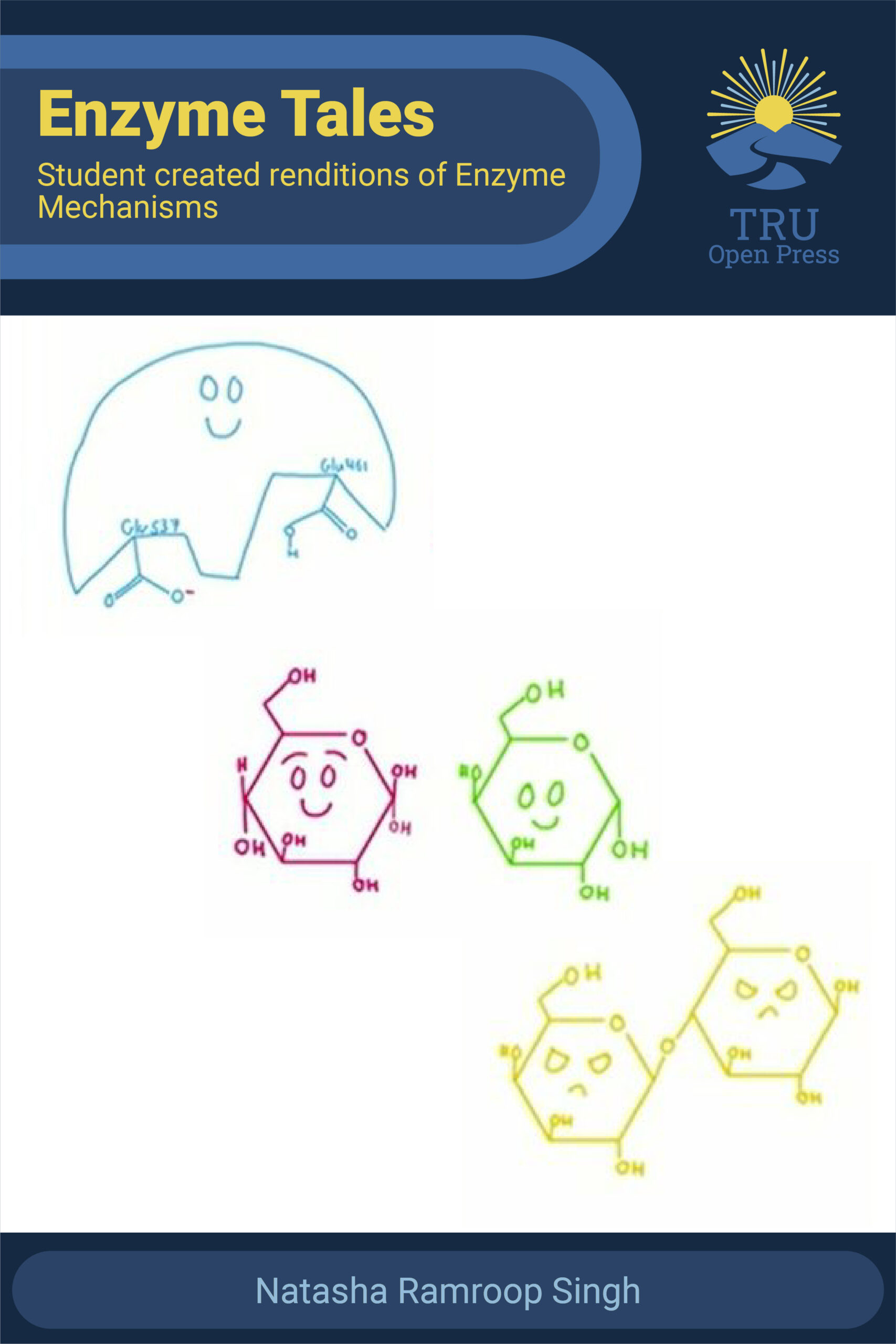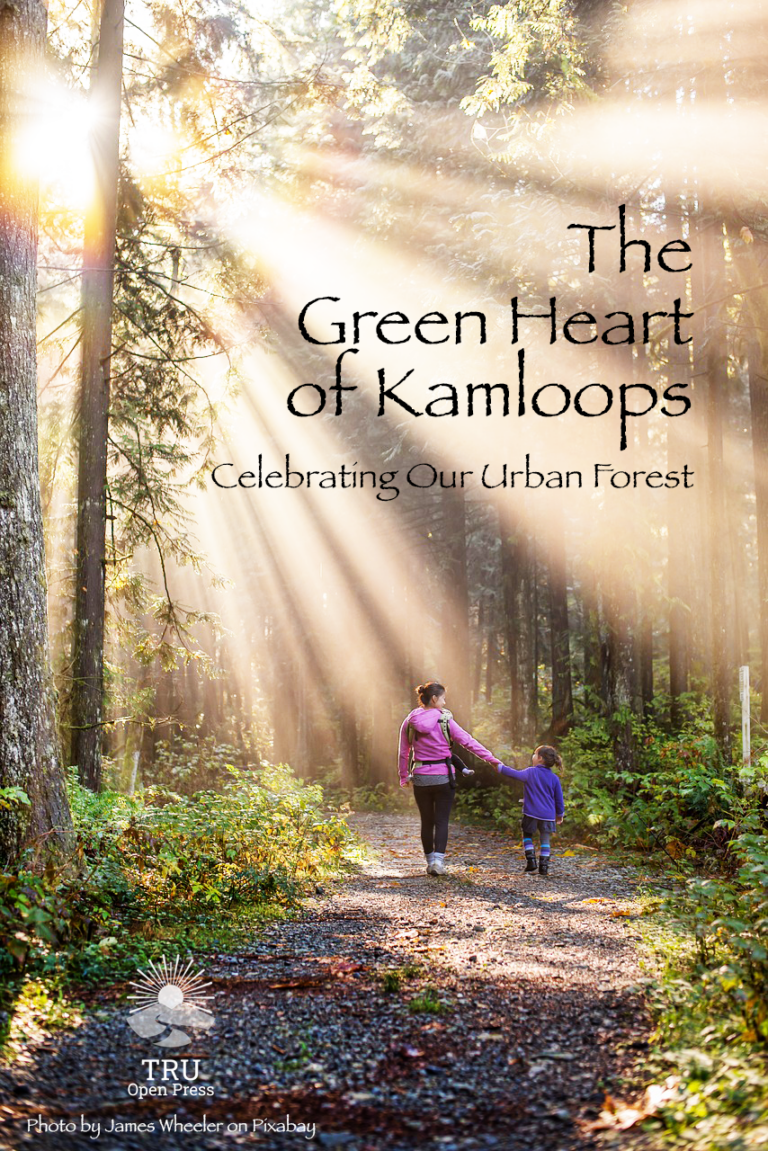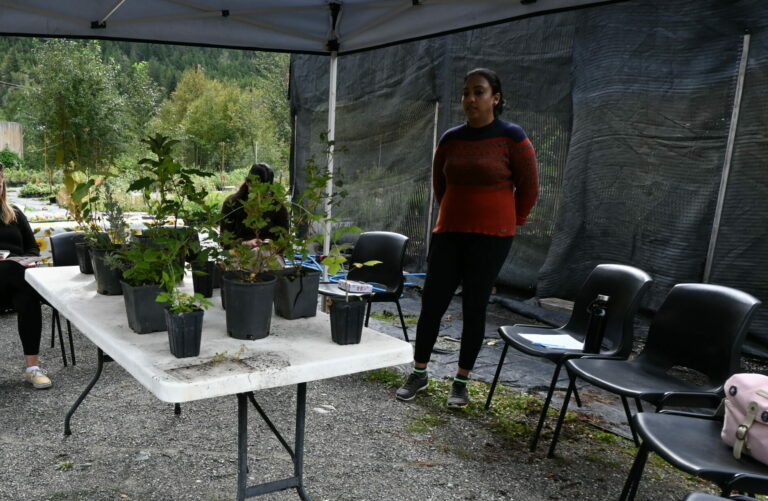Enzyme Tales: Student Created Renditions of Enzyme Mechanisms

Faculty/Staff: Natasha Ramroop Singh
Platform: Pressbooks
Site link (if applicable): https://enzymemechanisms.pressbooks.tru.ca/
Services provided: TRU Open Press provided only minor support for this project, including accessibility checking, transcript preparation, copyediting, front matter development, and an official cover design.
Description: As part of TRU’s Zero Textbook Cost (ZTC) initiative, Enzymes in Action: Student-Created Explorations of Biochemical Mechanisms was developed as an open educational resource to support BIOL 3130/CHEM 3730 – Introduction to Biochemistry. This innovative resource showcases student-created videos and chapters that creatively explain enzyme-catalyzed reaction mechanisms. Each chapter, named after the contributing student, includes background information and an original animated video, blending scientific accuracy with artistic expression.
Impact Summary
- Used in course(s): BIOL 3130/CHEM 3730
- When: Implemented as a supplementary resource and to grow with each upcoming cohort starting Fall 2025
- Estimated number of students using resource(s): 85 (TRU students – estimated enrollment)
- Average price of textbook/ resource replaced:
- The average price of a Biology- or Chemistry-related textbook in Canada typically ranges from $80 to $300 depending on format (print or ebook) and publisher – we are using a modest estimate of $100/ high quality textbook, featuring accessibility and engaging components such as videos, graphics, and interactive H5P activity components.
- Estimated savings: $100 x 85 students = $8,500 (at TRU)
Impact Story
Written by Divya Chandak
To help her students see chemistry as both essential and engaging, Associate Teaching Professor Natasha Ramroop Singh created Enzyme Tales, a resource that transforms enzyme mechanisms into imaginative stories. Many biology students arrive in her advanced biochemistry course feeling intimidated by chemistry or thinking it as irrelevant. Natasha wanted to change that perception and show them how chemistry brings biology to life.
Drawing inspiration from her earlier Introduction to Genetics project, Natasha invited students to explain enzyme mechanisms through storytelling. Each group was assigned an enzyme and encouraged to present its mechanism in a creative format, whether as a romance, a sci‑fi adventure, a crime mystery, poetry, or even interpretive dance. The results were transformative. Students immersed themselves in scientific literature, then reimagined their findings in ways that were engaging, humorous, and memorable.
“This resource really is created whole-sole by students. I was just the facilitator,”- Natasha Ramroop Singh.
With Natasha serving as facilitator and scientific guide, the class produced an entire collection of videos that showed enzyme action and highlight the connections between chemistry and biology.
TRU Open Press provided the technical infrastructure and publishing expertise to bring the project to life- Natasha Ramroop Singh.
For Natasha, one of the most rewarding aspects was preserving and sharing student work. “So often, student projects get marked and forgotten. Here, their creativity lives on,” she says. Students who preferred not to publish their work online still earned full credit, while others proudly contributed theirs to the OER, knowing their work would be used by future cohorts.
The impact has been profound. Students not only deepened their understanding of chemistry’s role in biology but also gained pride and ownership in their learning. A standout moment came when Natasha unveiled the completed OER in class with a QR code. “When students scanned the QR code and saw their work online, the pride was incredible,” she recalls. The room filled with excitement and a sense of accomplishment, confirming that their work mattered far beyond a grade.
For Natasha, it reinforced a guiding belief: open education is most powerful when it invites learners to shape the story themselves.
“Enzyme Tales: Student Created Renditions of Enzyme Mechanisms” by Natasha Ramroop Singh
The interview with Natasha can be found below, which will help in better understanding the project and its impact.






